|
2 Comments
Strange Places in Italy: The Cretto de Gibellina, A Concrete Colossus Artwork Covering a Ghost Town2/26/2016 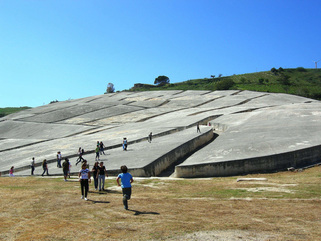 Ever since the Greeks and Romans ruled Italy, they have built monuments that have lasted for several millennia--many using concrete. Concrete type materials were used by humans for over 6500 years in Syria and Jordan. Hydraulic lime with cementing qualities were in use by 700BC. The ancient Romans discovered that adding volcanic ash to the mix allowed it to set underwater. In Rome, the huge domed ceiling of the Pantheon is made entirely of unsupported concrete. Romans added hair to prevent cracking and blood to make it frost resistant (hopefully, not human!) It should be no surprise that Italians are still using concrete, often in unusual ways... One example of this can be see from space on Google Earth: The Cretto de Gibellina (the Crack of Gibellina) in central Sicily. Also known as Cretto di Burri (Crack of Burri), named after Alberto Burri, the artist who created it, it is a half mile square work in concrete which resembles the cracking that appears in dried river mud. It was installed at the original site of Gibellina, a village that was completely destroyed by a 1968 earthquake. It looks as if the artist meant the cracks to represent the cracks in the earth and the lives of the people of Gibellina. In actuality, Burri covered the actual footprint of the buildings in the original town, while leaving the streets as pathways throughout the concrete. (The town of Gibbellina was relocated and christened Nuova Gibellina 20 kilometers away.) Being truly a monument to the town and the 1150 lives that were lost, the concrete installation actually contains the building rubble including furniture, utensils, and toys. Walking the "streets" visitors feel the emotions of the loss.  This unusual piece of modern art is worth the visit, as are many so-called ghost towns throughout Italy that have been abandoned after being destroyed by earthquakes. There are often recitals, other artists' installations, dance performances as well as the ruins of village buildings painted by other artists. It's like walking into a futuristic, post-apocalyptic film like Mad Max. The work was left unfinished after Burri ran out of funds in 1989, but in 2015, to honor what would have been Burri's 100th birthday, funding was found and his work was completed... made obvious by the much whiter colored concrete in one corner of the site. The olive oil is produced from a tree which is sacred. It gives wood for fire, for heat. It gives the olive oil which is for condiment, for cooking, but also for light, you know, for oil lamps, and the olives to eat, which is practically complete. --Antonio Carluccio, chef I've collected a series of short videos that illustrate how olive oil is grown, harvested and turned into extra virgin olive oil. In the first video below, a a small scale fattoria (farm with a small production facility) in the mountains of Liguria is shown harvesting their olives on terraced slopes by climbing up into the trees and raking the olives onto large nets. The olive oil production is done my fairly small farm machinery. In the next video, there is a broader view of larger scale, modern olive oil production where trees are harvested by machines that shake the olives loose and collect them in one step... The next video is a look at the Brizi olive oil factory in Montefalco, Umbria which makes extra virgin olive oil using the traditional "cold pressed" method with modern machinery. Note at the end of the video that the spent, dried cardboard-looking paste sheets are ground up to be sent to another facility which extracts a lesser grade olive oil from them. It's a good illustration of where the supermarket variety, tasteless olive oil might come from. The next shows a simple approach to olives and the oil produced... "We don't pick olives for profit... we do it because we have a certain love for these things." Hard world for the a couple of hundred gallons of oil... The final video illustrates the amazing size and age of the olive trees in Puglia in Southern Italy. As it turns out, today there are over 60 million olive threes in Puglia with the oldest trees being carbon dated to well over 200 years old. And yes, they still produce olives. Video: Robert Downey Jr and Marisa Tomei Parody Roman Holiday's La Bocca della Verita Scene2/24/2016 Let the Bocca della Verita (Mouth of Truth) Read Your Palm - From a Vending Machine? Wait... What?!2/23/2016  Ok, so while researching my post about our Bocca della Verita mascot, I came across this gem. Apparently, back in the 1980s, a vending machine company had just come up with a new design for a fortune telling machine. They showed off their machine to a prospective Italian client and he loved it--with one catch. They needed to make it look like the Bocca della Verita. Manufactured by DPS-Promatic in Italy, apparently the idea was a hit because the company claims to have units in countries all around the world. Apparently, they also make the machine in different versions: Horoscope, Tutankhamen, and a Gypsy. There is a floor standing model and a smaller wall-mounted one. Here's a video of how to use it. Stick your hand in the mouth and it will scan the lines of your palm. Wait until it analyzes, then it prints out an ATM style fortune... Many of you who have not yet been to Rome might not know what our mascot is... or why we chose him. I thought I would give a little history of this famous Roman treasure and an explanation of why he was chosen as our GVI logo. First, La Bocca della Verità literally translates as the Mouth of Truth. It is a two ton, six foot diameter, seven inch thick bas relief sculptured medallion, carved from Pavonazzo marble sometime between 200BC to 100 AD. It is located in the covered portico entrance to Chiesa di Santa Maria in Cosmedin in Rome and has stood there since the 17th century. Historians aren't sure of La Bocca's original use, meaning or purpose... either as part of a fountain or as a large manhole cover for the water delivery system in ancient Rome. They are sure that it must have been something very important since the marble he is carved from was quarried in present day Turkey, ruled by the Romans and called Asia Minor in the first century AD.  Bacchus Bacchus Some believe the stoic man's face is that of a pagan Roman god--perhaps Oceanus. With his two horns, it's doubtful that La Bocca is a mere mortal. Still others claim that La Bocca is really Tiberinus, the god of the River Tiber, who according to legend, found the twins Romulus and Remus and gave them to the she-wolf Lupa (who had just lost her own cubs) to suckle. It is said that these twins were the founders of the city of Rome itself. I don't think it's likely that a sculpture of Tiberinus would be carved from marble in Asia Minor of a local diety. It's more likely that La Bocca was carved in that area to honor one of the Roman gods with broader appeal. Perhaps he is really Bacchus (Dionysus in ancient Greece), a Greco-Roman god of the grape and wine, fertility, harvest, theater and both sexual and religious ecstasy. When I look really closely at the outer areas of hair, I can see a spiraled vine pattern, perhaps representing vines. But I have another theory about his true identity:  Michelangelo's Moses with horns Michelangelo's Moses with horns "And when Moses came down from the Mount Sinai, he held the two tables of the testimony, and he knew not that his face was horned from the conversation of the Lord. And Aaron and the children of Israel seeing the face of Moses horned, were afraid to come near.” (Exodus 34:29-30, D-R) Could it be that the face of La Bocca is really the horned face of Moses? Even Michelangelo sculpted Moses with horns. Perhaps the horns represent the righteousness of Moses... "I will cut off the horns of all the wicked, but the horns of the righteous will be lifted up." (Psalm 75:10) Could it be that this is really Moses? Do his horns represent righteousness? Is this the source of the legend about his bite? The Bite... La Bocca... The Mouth. This is the most famous thing about La Bocca. They say the legend began in the Middle Ages--If you told a lie with your hand in La Bocca's mouth, he would bite it off. You might have seen that famous scene in A Roman Holiday where Gregory Peck scares the hell out of Audrey Hepburn when he puts his hand in and acts like it is getting bitten off. (Click HERE to watch the scene). Well, Lucas and Lisa and I went to pay homage to La Bocca when we were in Rome... it was one of the places Lucas wanted to see the most--until we were about 30 feet from it, when he started to get a bit worried that the legend was true. He learned that the legend was simply great fun and nothing to worry about. Besides, God blessed me with a fabulous boy who really does tell the truth all the time. He's a great son and will grow to be a great man. I'm sure of it. Perhaps that's part of the reason I chose the Bocca della Verità as our Grand Voyage Italy mascot and logo. It reminds me of my wonderful, honest son. It also reminds me how he doubted his own virtue--something that we all should do from time to time--re-testing our values and honesty to keep us on track in life. It reminds me of our fantastic Grand Voyage throughout Italy. I suppose he also reminds me of myself. He kind of looks like me a bit, at least when I let my beard grow a big shaggy. He's got scars which don't affect his standing in the world. I've got scars too, but keep on moving forward. If he represents Bacchus, then that's fine too. I love wine (never to excess) with great food and can't wait every summer to harvest my heirloom tomatoes. Lately, most meals in our family are what Lisa, Lucas and I make ourselves from scratch at home. After living in France years ago, I always wanted to cook like the French did... but now, after getting back to our Italian roots, I realize that the French cuisine wasn't honest with me. It was complex and contrived. Italian cooking is the honest choice--simple ingredients prepared in simple ways. Often quick, never stressful, always delizioso. That's a truth, too.
The honesty part of La Bocca--whether inspired by Moses or not--is part of my reason for choosing him, too. When I write for this blog, I want to be honest about my feelings, my experiences and how I feel about the amazing things I uncovered--and have yet to uncover--along my Grand Voyage about Italy. I don't want to share things that I care little about. I want to share passions, history (the ultimate truth) and the culture that ran through my Father's veins. And the truth is, Italy isn't perfect. I'll always be truthful about that. May my own hand be bitten off if I write something that is untrue. My hand did come out clean, after all... (Read about our visit to La Bocca here). --Jerry Finzi You can also follow Grand Voyage Italy on: Google+ StumbleUpon Tumblr Members of Black Hand (la Mano Nera) arrested at Fairmont, W. VA.-The Mafia, more commonly known as the Black Hand in West Virginia, reared its ugly head in Marion County in 1908. The members of the Black Hand, all natives of Italy, had banded together with Frank Pisconeri as their president. They carried out a campaign of extortion throughout the county with their victims either Italians or Italians by descent.-(Marion Co Historical Society)
From Wikipedia: Black Hand (Italian: Mano Nera) was a type of extortion racket. It was a method of extortion, not a criminal organization as such, though gangsters of Camorra and the Mafia practiced it. According to a newspaper report in the New York Tribune of June 1912, the Black Hand "...really exists only as a phrase. As an organization such a thing never existed out of the minds of the police. It is a catch phrase made familiar through the newspapers, and the quick witted criminal of Latin extraction lost no time in using it as a nom de crime, which he wrote at the bottom of his blackmailing letters, sometimes - in fact, generally - adding fanciful decorations of his own, such as daggers dripping blood, revolvers spitting fire and bullets, crudely drawn skulls and crossbones and the inevitable sketch of a human hand." Origins The roots of the Black Hand can be traced to the Kingdom of Naples as early as the 1750s. However, the term as normally used in English specifically refers to the organization established by Italian immigrants in the United States during the 1880s who, though fluent in their Southern Italian regional dialects, had no access to Standard Italian or even a grammar school education. A minority of the immigrants formed criminal syndicates, living alongside each other. By 1900, Black Hand operations were firmly established in the Italian-American communities of major cities including New York, Philadelphia, Chicago, New Orleans, Scranton, San Francisco, Olean, NY and Detroit. In 1907, a Black Hand headquarters was discovered in Hillsville, Pennsylvania, a village located a few miles west of New Castle, Pennsylvania. The Black Hand in Hillsville established a school designed to train members in the use of the stiletto. Although more successful immigrants were usually targeted, possibly as many as 90% of Italian immigrants and workmen in New York and other communities were threatened with extortion. Typical Black Hand tactics involved sending a letter to a victim threatening bodily harm, kidnapping, arson, or murder. The letter demanded a specified amount of money to be delivered to a specific place. It was decorated with threatening symbols like a smoking gun, hangman's noose, skull, or knife dripping with blood or piercing a human heart, and was in many instances, signed with a hand, "held up in the universal gesture of warning", imprinted or drawn in thick black ink. According to author/historian Mike Dash, "it was this last feature that inspired a journalist writing for The New York Herald to refer to the communications as "Black Hand" letters—a name that stuck, and indeed, soon became synonymous with crime in Little Italy." The term "Black Hand" (in Italian: Mano Nera, and in Sicilian: Manu Niura) was readily adopted by the American press and generalized to the idea of an organized criminal conspiracy, which came to be known as "The Black Hand Society". The tenor Enrico Caruso received a Black Hand letter, on which a black hand and dagger were drawn, demanding $2,000. Caruso decided to pay, "and, when this fact became public knowledge, was rewarded for his capitulation with 'a stack of threatening letters a foot high,' including another from the same gang for $15,000." Realizing the extortionists would continue to demand money, he reported the incident to the police who, arranging for Caruso to drop off the money at a prearranged spot, arrested two Italian-American businessmen who retrieved the money. Carrying loads on one's head goes back to prehistory times. Before the advent of the wheel and carts, and before man learned how to domesticate animals like goats, donkeys, oxen and horses to carry their loads, he learned that balancing a load on his head was a simple, efficient method of moving large loads from one place to another. Before roads, often the easiest path from point A to point B was as straight as a person could walk... usually up and over hills and rugged terrain, when even wheels couldn't traverse. It was a fairly efficient method of moving heavy or bulky things. In fact, scientific controlled studies have proven that up to 20% of a person's weight could be carried on the head without any additional physical exertion, and up to 70% of their body weight could be carried with a moderate level of cardiovascular exertion. This means that a woman of 150 pounds could potentially handle a load weighing over 100 pounds carried on her head. In ancient Egyptian, there was the Ritual of Repentance, where (as example) a thief would repent for his sin by carrying a basin of burning coals on top of his head. Even the Book of Proverbs mentions this type of gesture even trying to have an enemy repent... "If your enemy is hungry, give him food to eat; if he is thirsty, give him water to drink. In doing this, you will heap burning coals on his head, and the Lord will reward you". Carrying loads on the head is still vary common in many developing countries of the world... and when you think of it, parts if Italy might have been still "developing" up until unification in the late 1800s. Still today, you might see someone carrying a load on their head. It might be a casual shopper in an open air market carrying home a bulk package of toilet tissue or basket of tomatoes. In harvest time you might still see people carrying loads of lemons or olives or chestnuts on their heads. Typically, when carrying a particularly heavy load, a wrapping of cloth in the shape of a donut is placed on the head first to cushion and help balance the load. As early photographers witnessed, many types of street vendors throughout Italy also carried their wares on their heads... pots and pans, produce, fish, musical instruments and even furniture. Even children learned early on how carrying things on their heads was a practical way to get the job done. They helped with chores, harvests, deliveries and before child labor laws, many worked hard hours, with under the mentorship of their parent or as an apprentice. Of course, women in Italy did more than their share of the labor, too. They carried water, firewood, bread, sacks of flour and other loads during harvest time. They even would carry their baby in a basket on top of their head when traveling back and forth from fieldwork. And when Italians emigrated to America, they weren't shy about carrying on the carrying tradition in the Little Italys that sprung up.
There are 209 families with the Finzi name in Italy. This is what I discovered after using the mapping tool on the ITALIANNAMES.COM website. The tool is one of the best of this type that I've found on the Web. It's easy to use and can zoom into to particular regions. After typing in your family name and doing the initial search, click the "see how they are distributed in Italy" button. You will get a map of Italy numbering how many families have your name in each region. Click on a particular region and it will zoom in to show the towns they are living in.
If you want to find out more specifics, you could look up your family name in the Italian White Pages along with the name of a town and get both addresses and phone numbers. In case you want to know what your family names mean, here is a site which lists the Origins and Etymology of Italian Surnames... both the meaning and where the name originated. Good luck in your family research! --Jerry Finzi You can also follow Grand Voyage Italy on: Google+ StumbleUpon Tumblr Take a funny look at the challenging driving on the Amalfi Coast in this video Lisa shot while heading toward Salerno and onward toward the mountains of Basilicata. The Amalfi Coast Road is curvy and very narrow with the cliff on one side and nothing but air and sea on the other. When researching the Amalfi Coast Road, I read that the buses are specially made--narrower than normal buses. Don't you believe it! They are every bit as wide as large tour buses in the States. When driving the Coast Road you with share the road with them... along with center-lane scooters and motorcycles (the line in the middle IS their lane it seems), cyclists (often going faster than you), teeny cars hugging your butt so close you can't see them in your mirrors, and huge, double tandem 18 wheelers! And there are more than a few pazzo Italian drivers passing on blind curves (often with a quick beep beep of their horn as they come around) and crossing over the line. Another danger is cars, trucks and buses parking on the side of a narrow road (most of Amalfi is a no parking zone along the roadside) that you'll have to get around while cars are coming toward you. In some places they are starting to introduce alternating stop lights, giving the east and west bound traffic each their turn on especially narrow stretches. But don't trust this too much... Italians are notorious for ignoring both traffic laws, signs and lights. Enjoy this video and then if you like, check out the rest of our experiences during our three week Voyage through Italy. As for driving the Amalfi Coast Road... I did it! I don't have a medal to prove it, but I surely deserve one! The driving was intense--more than you can imagine--but the pleasure of seeing the beauty all around the Coast Road was like living in a dream... Enjoy the video... For more on Amalfi Coast area and driving, read these posts:
Visiting Pompeii: A Road Too Far Amalfi Coast Drive: Part Paradise - Part Hell Hertz Really Hurtz and the Sewer the is Naples: Renting a Car in Italy Ok, Hold Your Breath, 'Cause this is Really Gonna HERTZ! Renting cars in Italy --Jerry Finzi You can also follow Grand Voyage Italy on: Google+ StumbleUpon Tumblr 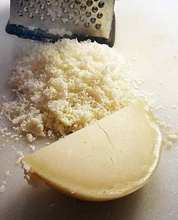 Grating my aged caciocavallo Grating my aged caciocavallo Ok... so what's the difference between "parmesan" (lower case P), pre-grated, packaged cheese from the supermarket versus the real Parmigiano-Reggiano (Upper case P) sold by a wedge taken from a large wheel of cheese and grated at home? Keep in mind, that in the United States, the word "parmesan" is not regulated. A cheese labeled as parmesan in the United States is not genuine Parmigiano-Reggiano, but is really a poor imitation. In essence, the large American cheese companies are lying to their customers. Period. In Italy, Parmigiano-Reggiano is strictly controlled with its D.O.P. protected status. It has to be made adhering to strict guidelines and processes. Years ago, in the U.S. the word "parmesan" was used to label real Parmigiano-Reggiano cheese, but nowadays is used on labels of store bought factory made pre-grated cheese, none of which bare any resemblance to the real thing. These bottle, pre-grated cheeses are usually factory made, contain fillers, and are fluffed up (to fill jars with less product by weight) by the addition of cellulose powder (some may also use corn starch), they say on the label "to prevent caking". Thanks for doing us such a favor! In fact, when you grate an aged imported cheese like Parmigiano-Reggiano (called "the King" of Italian cheeses), clumping or caking happens when you store it in a jar or bowl. This is not a deficit at all. Trust me, the only reason they add cellulose is as a filler... fluffing up the cheese so less by weight fits into each jar. Besides, who wants to eat more fiber in their cheese in the form of wood or plant cellulose? Lately at home, we've been buying the more expensive, real stuff because it just plain tastes better with no additives. It's real cheese. Interestingly, right now, Kraft brand grated "parmesan" in a jar sells for $1.37 an ounce, where a 1 pound wedge of 3 year aged Parmigiano-Reggiano (ordered on Amazon) costs only $1.34 an ounce. Buy a 3 pound wedge and the price comes down to 89 cents an ounce. The bog box store BJs has wedges for as low as 81 cents an ounce! When we have a wedge of imported Parmigiano-Reggiano in our fridge, it usually lasts 3-4 weeks or so... mostly used for a grated topping or ingredient. Personally, I wouldn't dream of ruining my Cacio e Pepe alla Romano pasta recipe by throwing in handfuls of jarred parmesan. Disgustoso! Sure, you have to grate it yourself, but then again, that's an advantage. When you buy pre-grated "cheese", you can only use it as a grated cheese. With a block cheese you can cut slices to have with apples or pear, shave off slivers to put on top of soups or salads, grate into little curls to top off pasta, larger gratings to top pizza, or very fine to put into your grated cheese bowl or shaker. Grated cheese also goes bad faster (my Mom used to leave hers out, refrigerated--ugh). When you grate your own, you grate only what you need for a few days ahead. I also buy imported caciocavallo cheese in a 5 pound ball and hang it to age and dry in my cellar for a couple of months. After it's well aged, I start using it... cutting off small pieces at a time and using it past and other recipes. At the very end there is always a super dry, very aged "piccante" caciocavallo that I loves using as grated cheese.... it even blows Parmigiano-Reggiano away with it's intense flavor on top of pasta dishes. Here is a link to an article from the Huffington Post that gives a balanced report on the differences between "parmesan" and "Parmigiano-Reggiano" and the controversy about the fillers and cellulose used in off the shelf parmesan pre-grated cheeses... CLICK HERE. UPDATE 2/18/16: I checked the ingredients on all the brands in the supermarket this morning. Virtually all of the brands sold include cellulose to "prevent caking" and some even include corn starch. Kraft brand had even more things in it, while the 4C brand contained no fillers, cellulose or other ingredients other than cheese. It even looked different--fresher--than the other brands.
 Bialetti and his famous mustache Bialetti and his famous mustache Renato Bialetti, the the inventor of the Moka, the iconic Italian coffee maker, passed away on February 11th at the age of 93 in Ascona. His father Alonso started the business in 1933, with Renato taking over in 1946. Renato's desire was to make the Moka "the" ultimate coffee maker in the whole world--not just Italy. He started by designing a logo of Omino coi Baffi (Little Man with a Mustache), imprinted on each and every Moka manufactured. Of course, as all Italians know, the man with the mustache was none other than Renato himself. In 1933, babbo Alfonso designed the first aluminum stovetop espresso coffee maker. Still today, it has a decidedly Art Deco, mechanical design which suited the turbulent times of change that rocked Italy at the time. This coffee machine, The Moka Express, would find itself in 90% of all Italian homes--forever changing the culture of Italian coffee. This little coffee pot changed the fabric of Italian society and culture... Before the Moka, coffee (typically, espresso) was generally consumed in public coffee bars. These bars sold the vast majority of all coffee consumed in Italy. They were also places of political talk and revolution. But, public coffee bars were typically a place only for men... their home away from home. Once women got their hands on the Moka, they too could have their cup of espresso and discuss worldly affairs with their neighbors and friends. The Moka could be seen as helping women in their emancipation.  Iconic, lasting style Iconic, lasting style Nowadays, virtually every household in Italy has at least one Moka pot, but when we voyaged through Italy, we noticed that people seem to have more than one--Even Lisa now has three... a large Papa Moka, Moma Moka and a tiny baby Moka. She loves the flavor she gets out of them, even though I think they are a bit of a pain to keep clean. 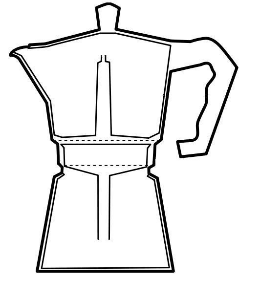 How the Moka uses steam to make espresso How the Moka uses steam to make espresso How to Use a Moka First, unscrew and separate the upper pot from the bottom. Fill the boiler (the bottom compartment of the pot) with water almost up to the safety release valve. Next, insert the funnel shaped metal filter and add fine ground coffee. The finer the ground, the more authentic the espresso taste... but you might have some fine grounds at the bottom of your cup. Lisa suggests experimenting with different brands and grinds to decide which gives you the best flavor. Lisa prefers Cafe Verona from Starbucks. After adding coffee grounds, tightly screw the upper part onto the base. Then place the pot on a small burner on medium flame. If you use a large burner, you'll overheat or melt the handle. The water is brought up to a boil with steam created and sent from the boiler up through the funnel. The steam eventually reaches a high enough pressure to gradually force the surrounding boiling water up the funnel through the coffee powder and into the upper chamber, where the coffee is collected. Here's the important part... knowing when the espresso is finished. When the lower chamber is almost empty, bubbles and steam combine and make a characteristic gurgling noise. This "strombolian phase" (name for the famous Sicilian volcano) allows a mixture of superheated steam and water to pass through the coffee, which leads to bitter, overdone espresso. So don't leave your Moka alone and stop the brewing as soon as you hear this gurgling. Moka pots include a pressure release valve in case the filter area gets clogged--a rare occurrence, as long as you keep your pot clean. require periodic replacement of the rubber seal and the filters, and a check that the safety release valve is not blocked. You might want to consider one accessory for your Moka pot to help with an awkward gas cooktop grate design that might not create a solid base when you put your pot on top. Here is a link to a 5 inch Ilsa Gas Ring Reducer for around $9 on Amazon. You place this over the existing grate and creates a stable platform that won't let your Moka tip over. And if you ever do need parts (handle, filter, rubber gaskets, etc.) Amazon carries just about everything you need to keep your Moka running up to par. Just about every year for the last few decades, I make a Valentine for Lisa. When I started, I used to actually cut them out of artisan hand made papers, but for the last decade or more I create them in Photoshop. Lisa hasn't seen this --yet.
This year a more classico look... Tutto il mio amore... |
Categories
All
Archive
June 2024
|










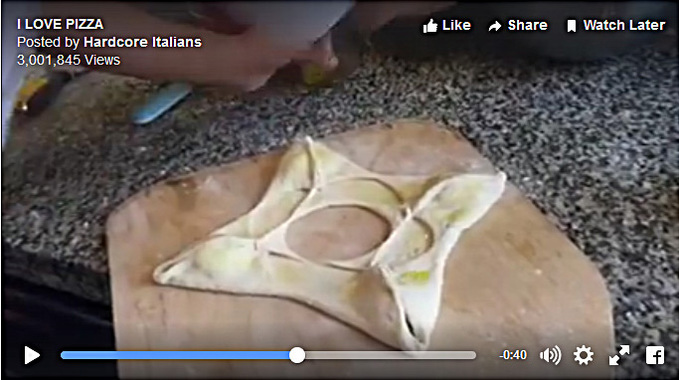













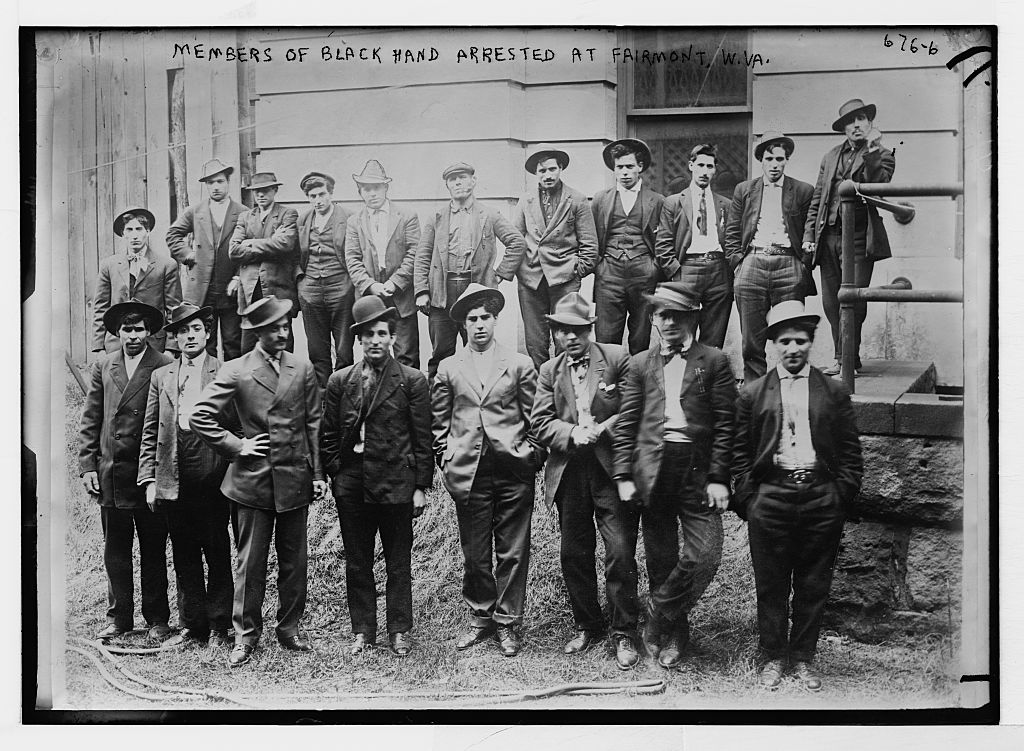
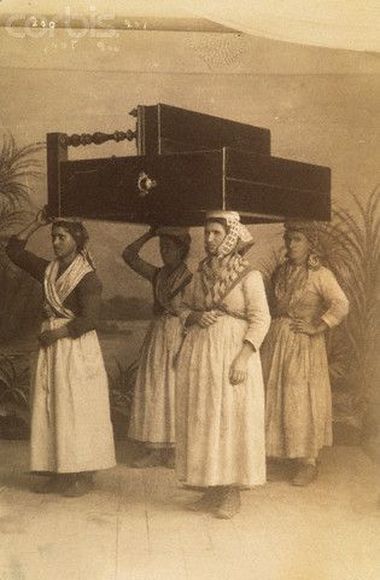



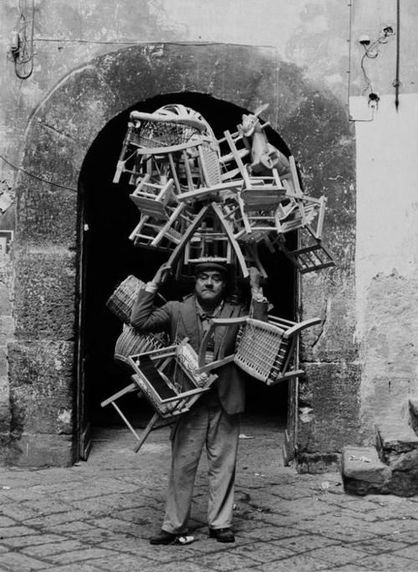








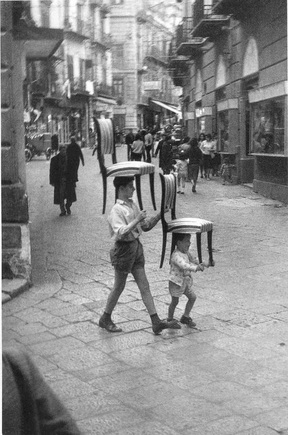
















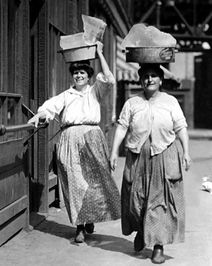





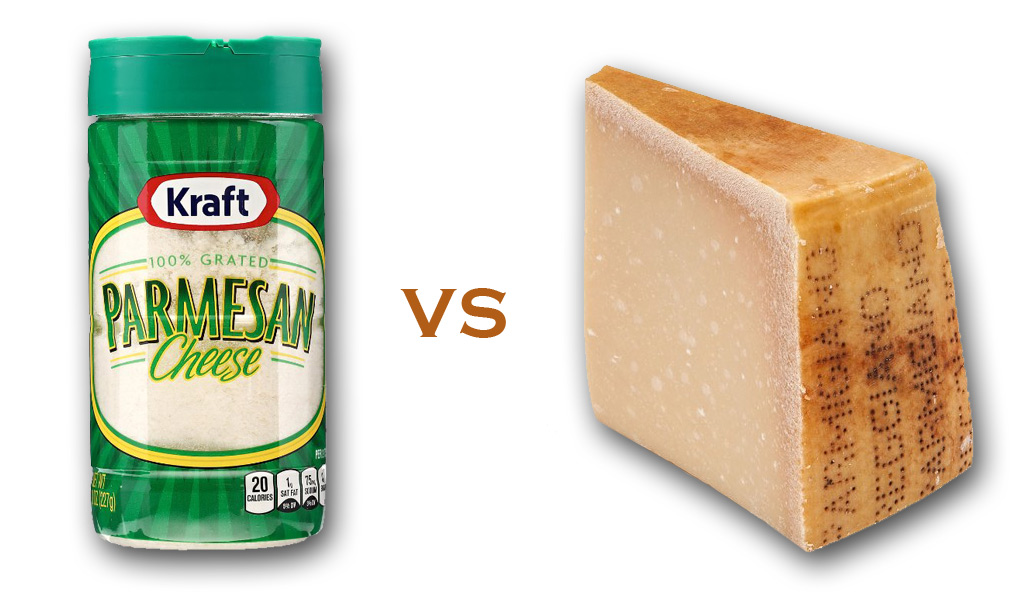






 RSS Feed
RSS Feed
